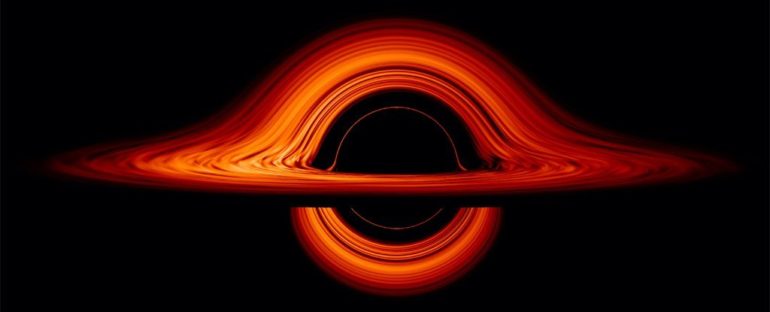For decades, scientists have wrestled with a complex mystery of physics: Could the immense amounts of energy theoretically produced by rotating black holes ever be tapped by human hands?
If future societies were somehow able to pull off this magnificent feat, the power supply of far-off galactic civilisations would seemingly be assured – and now scientists have a new explanation for how such an exotic extraction might one day be possible.
“Black holes are commonly surrounded by a hot ‘soup’ of plasma particles that carry a magnetic field,” explains astrophysicist Luca Comisso from Columbia University.
“Our theory shows that when magnetic field lines disconnect and reconnect, in just the right way, they can accelerate plasma particles to negative energies and large amounts of black hole energy can be extracted.”
Comisso’s new work – co-authored by physicist Felipe A. Asenjo from the Universidad Adolfo Ibáñez in Chile – provides a new prism for glimpsing how energy extraction from a spinning black hole could work.
Given their extreme mass, it’s only natural to assume black holes also contain an extreme amount of energy. Unfortunately it’s all locked away at the bottom of a slippery pit of spacetime.
Under conditions where that mass rotates, it could be possible to dip a toe into this immense energy pool as the slopes of spacetime are dragged along.
Emminent University of Oxford physicist and mathematician Roger Penrose suggest one ingenious method. In what became known as the Penrose process, energy might theoretically be extracted from the region outside a black hole’s event horizon, called the ergosphere, within which spacetime gets twisted around from the effects of the black hole’s rotation.
Penrose’s calculations suggested that if a particle split into two parts inside the ergosphere, with one piece falling into the event horizon and the other escaping the black hole’s gravitational pull, energy yielded by the escaping object would be theoretically extractable, if practically impossible.
This famous idea was experimentally verified by scientists in a paper published only a matter of months ago, but it’s not the only suggested means of harnessing a spinning black hole’s energy.
Hawking radiation, based around quantum mechanical emissions, is another way, as is what’s known as the Blandford–Znajek process, in which energy might be extracted electromagnetically via the magnetic field around a black hole.
In Comisso and Asenjo’s analysis, magnetism also plays a central role – specifically, as magnetic field lines break and rejoin inside the ergosphere – but it also recasts some of the thinking of the Penrose process.
As magnetic reconnections occur outside the event horizon – splitting plasma particles accelerated to velocities approaching the speed of light in two different directions – one plasma flow could fall into the event horizon, with the other escaping.
From the perspective of the black hole, the falling particle would be imbued with a negative amount of energy. From outside the black hole, the exiting particle would have positive energy that could be put to work.
Via this method, escaping plasma streams with topped-up energy could theoretically serve as a virtually limitless source of free energy, as long as the black hole keeps swallowing negative energy plasma, that is.
“We calculated that the process of plasma energisation can reach an efficiency of 150 percent, much higher than any power plant operating on Earth,” Asenjo explains.
“Achieving an efficiency greater than 100 percent is possible because black holes leak energy, which is given away for free to the plasma escaping from the black hole.”
While it’s perhaps unlikely that we could ever somehow feasibly exploit this energy generation in practical terms, that doesn’t mean it’s entirely useless.
From an astronomical perspective, the phenomenon could be what powers black hole flares – representing vast releases of radiation energy going untapped into space.
“Differently from the Blandford-Znajek process, in which the extraction of rotational energy is obtained through a purely electromagnetic mechanism, the energy extraction mechanism described here requires non-zero particle inertia,” the authors write.
“This mechanism is also different from the original Penrose process, since dissipation of magnetic energy is required to produce the negative-energy particles. Clearly, all mechanisms extract black hole rotational energy by feeding the black hole with negative energy and angular momentum.”
The findings are reported in Physical Review D.


